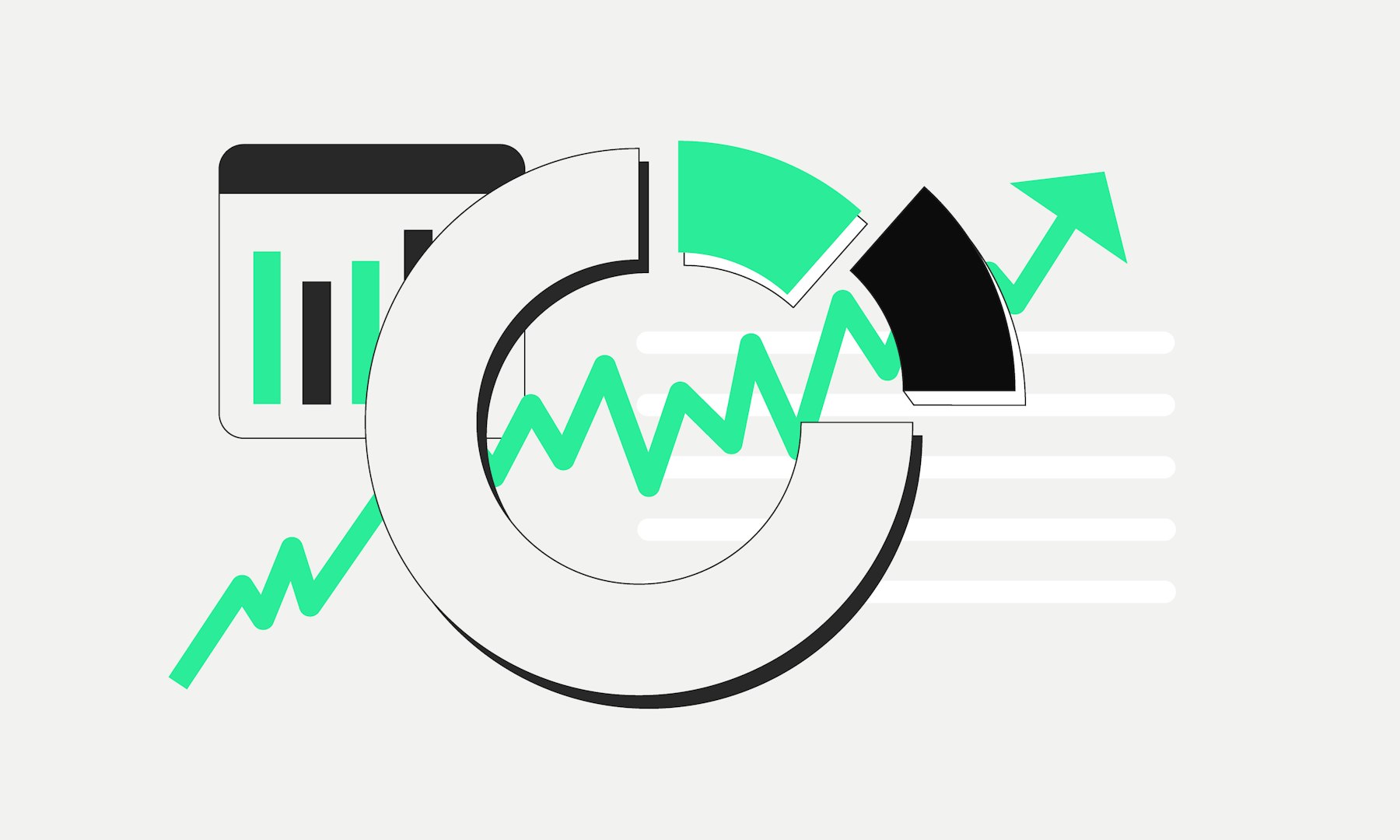Fibonacci retracements are applied by drawing horizontal lines on a price chart. First, two key points are selected: a high point and a low point within a trend. The Fibonacci tool then calculates the retracement levels between these two points. These levels represent potential price zones where the price may stabilise or reverse.
However, these levels are not guaranteed turning points but serve as a guide for traders to plan potential entry and exit points. Fibonacci levels often highlight critical resistance or support zones that can be incorporated into a trading strategy. The significance of these levels can be enhanced by combining them with other trading indicators.
Trendlines help assess the overall market direction, while moving averages such as the 50-day SMA (simple moving average) provide additional insights into potential support or resistance areas. The relative strength index (RSI) is also an important trading indicator, as it shows whether an asset is overbought or oversold at a Fibonacci level.
What is Fibonacci trading and why is it used?
Fibonacci trading is a technical analysis method that uses Fibonacci ratios to determine potential price levels for entries, exits, and stop-loss positions. This approach helps traders understand trend corrections and continuations more effectively and align their strategies accordingly. Fibonacci trading is valued for its simplicity and universal applicability across different markets.
Retracement levels play a central role in Fibonacci trading, as they allow traders to predict how far a price might pull back within a trend before continuing. These levels – such as 38.2%, 50%, and 61.8% – serve as a guide to identifying key support and resistance areas.
The major advantage of Fibonacci trading lies in its flexibility: it can be applied in all markets, including forex, stocks, and cryptocurrencies. In strongly trending markets, Fibonacci trading is an essential tool, as it provides clear visual reference points for important price areas.
Advantages of Fibonacci trading
Fibonacci trading offers clear guidance for analysing price movements. The method is easy to apply and suitable for different markets and timeframes. Some key benefits include:
Clear visual guidance – Fibonacci retracement levels are easy to draw on a price chart and highly visible
Universal application – works in forex, stock, and cryptocurrency markets, regardless of volatility
Helps with planning – support and resistance areas simplify entry and exit point selection
Can be combined – integrates well with other technical indicators such as moving averages or RSI
Supports trend analysis – enables traders to analyse pullbacks within a trend and make informed decisions
Risks of Fibonacci trading
Although Fibonacci trading is a useful tool, there are risks that traders should consider. The method is based on probabilities, and none of the levels guarantee price movements. Important risks include:
Subjectivity – selecting highs and lows for calculation is not always clear-cut
Lack of certainty – Fibonacci levels are not guaranteed reversal points, only guidelines
Risk of overinterpretation – focusing exclusively on Fibonacci levels may lead to overlooking other key factors
Combination issues – using too many indicators can create contradictory signals
Volatile markets – in highly fluctuating markets, Fibonacci levels can be broken, reducing their reliability
Fibonacci trading strategies
Fibonacci retracements provide traders with a versatile foundation for developing various entry and exit strategies. Here are some of the most common Fibonacci trading strategies used in practice:
Trend-following strategy
This strategy focuses on using pullbacks (temporary price declines) within an existing trend. Traders look for a price retracement to a key Fibonacci level, such as 38.2% or 61.8%, to enter trades in the direction of the trend. This approach works particularly well in strong upward or downward trends.
Combining with other indicators
Fibonacci levels can be paired with tools like moving averages or the Relative Strength Index (RSI) to improve accuracy. For example, if a price holds at a Fibonacci level, it can be further confirmed by an RSI reading in the overbought or oversold range.
Breakout strategy
Traders use Fibonacci retracement levels to identify potential breakouts. If a price breaks through a key Fibonacci level, it may indicate a strong trend continuation. Stop-loss orders can be placed just below the broken level to manage risk.
Reversal strategies
Fibonacci trading can also be used to identify potential reversal points. Traders observe whether a price falls to a level like 50% or 61.8% and then starts to move in the opposite direction. This strategy is often combined with candlestick patterns to strengthen the analysis.
Pro tip:
Every Fibonacci trading strategy should always be used alongside solid risk management. Use stop-loss orders and consider Fibonacci levels within the overall chart context, rather than relying on them alone.
Example: How to apply Fibonacci retracements
Imagine Bitcoin's price rises from €20,000 to €30,000, then starts correcting downward. You can draw a Fibonacci retracement by selecting the low point at €20,000 and the high point at €30,000. The price drops to the 50% level at €25,000 and shows signs of stabilisation – a potential entry point in the direction of the original uptrend.
In this example, the 50% level acts as a potential support. You could bet on a price increase if bullish candlestick patterns, such as a hammer or engulfing pattern, appear at this level. At the same time, you could place a stop-loss below the next level, such as 61.8%, to limit your risk.
Fibonacci retracements also help set trade targets. If the price rises again, you could aim for the previous high of €30,000 or even an extended target like the 161.8% extension level. With the right strategy, Fibonacci retracements can be used to make planned and risk-conscious decisions.
